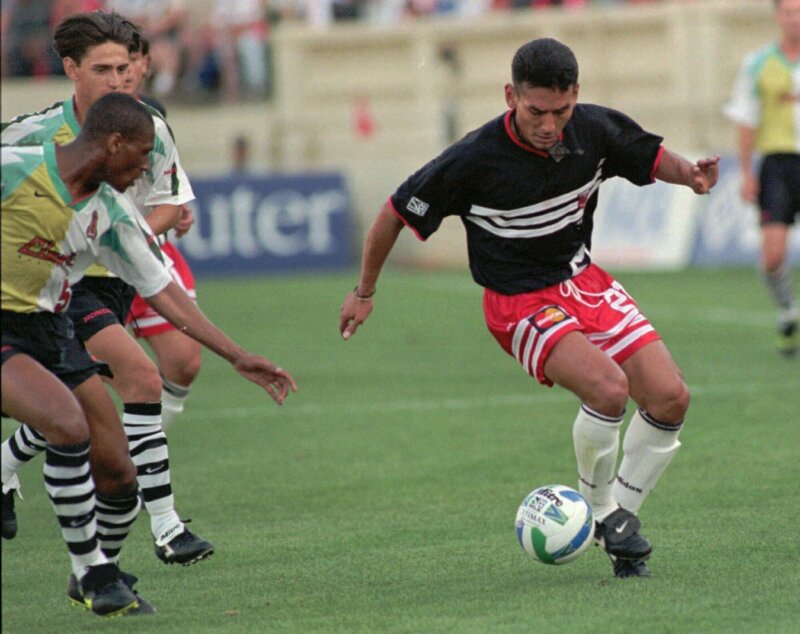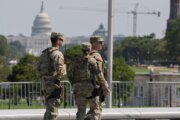
Audi Field sits just a couple of blocks down the street from Nationals Park and is not only the home of D.C. United, but is also a constant reminder that dreams can come true.
On April 6, 1996, Major League Soccer played its first-ever game in San Jose when the home team, the Clash, hosted D.C. United.
San Jose State University’s Spartan Stadium was filled to the brim with 31,000 fans for the league’s inaugural game, and there was optimism that MLS would truly be the lasting legacy of World Cup USA 1994.
“I remember walking on the field and seeing that crowd and thinking, ‘Wow,’” said D.C. United’s first captain, John Harkes, who still lives in Fairfax, Virginia. “‘People want to see this game here. People want to cheer for this game. They want to be part of this and connect to the game on pro level.’ The biggest question afterward – ‘Can we sustain it?’”
It was understandable for Harkes to have doubts about the long-term viability of MLS. Harkes starred at the University of Virginia from 1985 to 1987, and captained the U.S. national team. But, out of college, his only professional option in this country was the American Soccer League, which struggled to attract 2,000 fans per game.
In 1990, Harkes was so talented that he did what, at the time, was unthinkable for an American: He made the move to England, where he signed with Sheffield Wednesday.
Harkes proved the skeptics in England wrong with his play on the field, and his 35-yard blast past former England World Cup goalkeeper Peter Shilton was voted English Football’s Goal of the Year.
By the mid-’90s, Harkes had built a successful career in England. But, for MLS to have a chance, it had to sign the best American talent. When Harkes was signed by D.C. United, he was in the middle of a season playing for West Ham United in London.
“‘OK, we are in March. I should probably get flights booked,’” Harkes remembers telling D.C. United executives. “We were going into the unknown. It was more about: ‘Are we going to pull this off? Is this league really going to kick off?’”
FIFA — soccer’s governing body — awarded the 1994 World Cup to the U.S. in July 1988, with the stipulation that the U.S. had to establish a major professional league. The previous high-level pro soccer league, the North American Soccer League, folded after 16 seasons in 1984.
The NASL was the league that brought Pele to the U.S. and created an American soccer boom in the ’70s of kids playing. And, by the ’90s, “soccer mom” was a demographic coveted by politicians running for office.
It seemed like the foundation existed for professional soccer to succeed again in the U.S., but there was the sobering reality that organizing and running a successful World Cup, which the U.S. did in 1994, was not the same as operating a league.
MLS was supposed to start in 1995. It was not ready. It only added to anxiety in the soccer community, and led to real doubt that the league promised to FIFA would ever be delivered.
For Harkes — who helped guide D.C. United to three championship games and two titles in three seasons — April 6, 1996, will always be a significant date, because at least it was a start.
“We lost that first game to San Jose, and we were disappointed,” Harkes said. “But the big picture, it was an important part of history, about growing our game on a pro level in this country. We were happy to be part of it, but that’s when the hard work really started.”
The hard work has paid off, and the dream did come true. When it resumes play again, MLS will be in its 25th season, with 26 teams currently playing and four more teams soon to be added.
A country that once had more soccer detractors than supporters now has a league that averages over 20,000 fans per game, and attracts attention and players from around the world.








